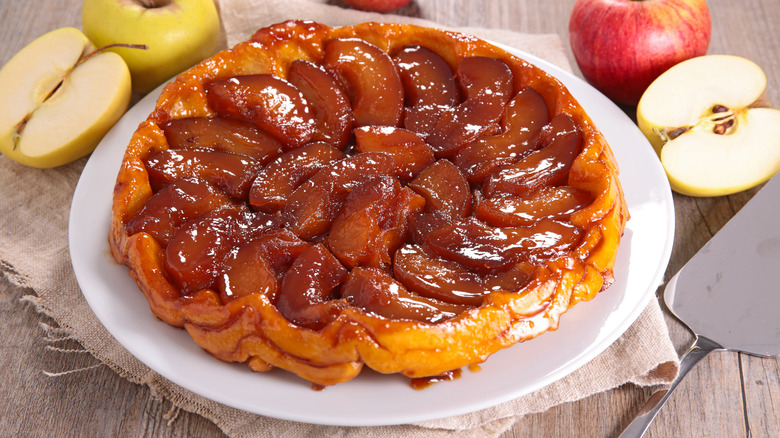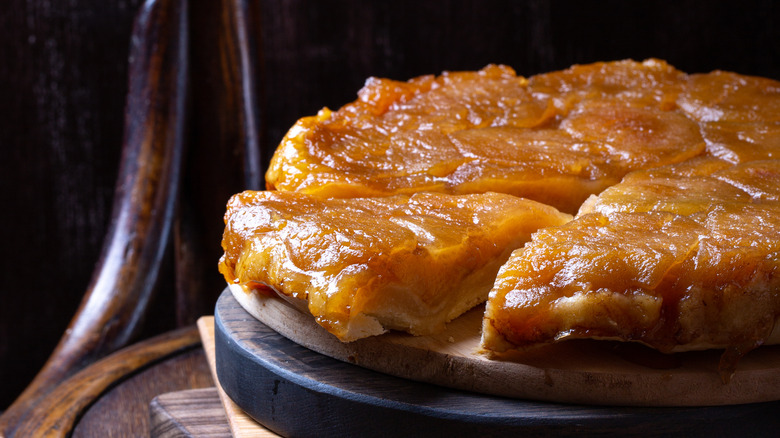The Truth About How Tarte Tatin Got Its Name
If you're a fan of a good ol' tarte Tatin recipe, you may find it interesting to know that the delightful dessert is just another one of those historical culinary mistakes — where the result turned out to be so good, the recipe was used again and again.
This item of French confectionery came to be in the town of Lamotte-Beuvron more than a century ago, per Best of France. In the late 1800s, two sisters by the names of Carolina, the youngest, and Stéphanie Tatin, the eldest, operated a restaurant and hotel by the town's train station. What's Cooking America credits the elder Stéphanie with being an exceptional chef, and her recovery from the near culinary disaster is a testimony to her skill.
Despite its accidental origins, Stéphanie's dessert became famous and made its way to Paris, then the rest of France and Europe, and eventually sailed across the Atlantic to America where it's also enjoyed today. However, if you travel to France, you may find that there are as many different versions of the dish (even some savory ones) as there are accounts of how it came to be, according to National Geographic.
The birth of tarte Tatin
Folklore suggests that the great slip-up that resulted in tarte Tatin occurred during a busy hunting season, reports National Geographic. When Parisian hunters returned from a day of shooting, they would eat at the Tatin sisters' hotel before training home. One day, during a shooting season toward the end of the 19th century, the siblings' restaurant was busy with an influx of guests, perhaps leading to a stressed Stéphanie Tatin's culinary mistake.
The story has it that Tatin had set about making a traditional French apple tart recipe, but she somehow managed to forget the actual tart base, per MSN. (There, there...We know what hospitality is like, Stéphanie). Being one of quick-thinking culinary skill, says Best of France, she improvised by adding the pastry on top of the caramelized apples and flipping it over once baked, making what was essentially an upside-down apple tart served hot. By the time a Parisian restaurant critic spread word about the dessert and a restaurant in the City of Light began serving it on its own menu, the tarte Tatin was a bonafide sensation.
We'd love to imagine that in the Tatins' bustling restaurant, this conversation transpired: "What a lovely dessert! I've never tried anything like it. What's it called?" "...Errr, tarte...Tatin!" Stéphanie stammered in response. However, many historians believe that the sisters first named the dessert tarte Solognote after the Sologne region, known for upside-down fruit tarts, while the restaurant critic referred to it as tarte Tatin.

